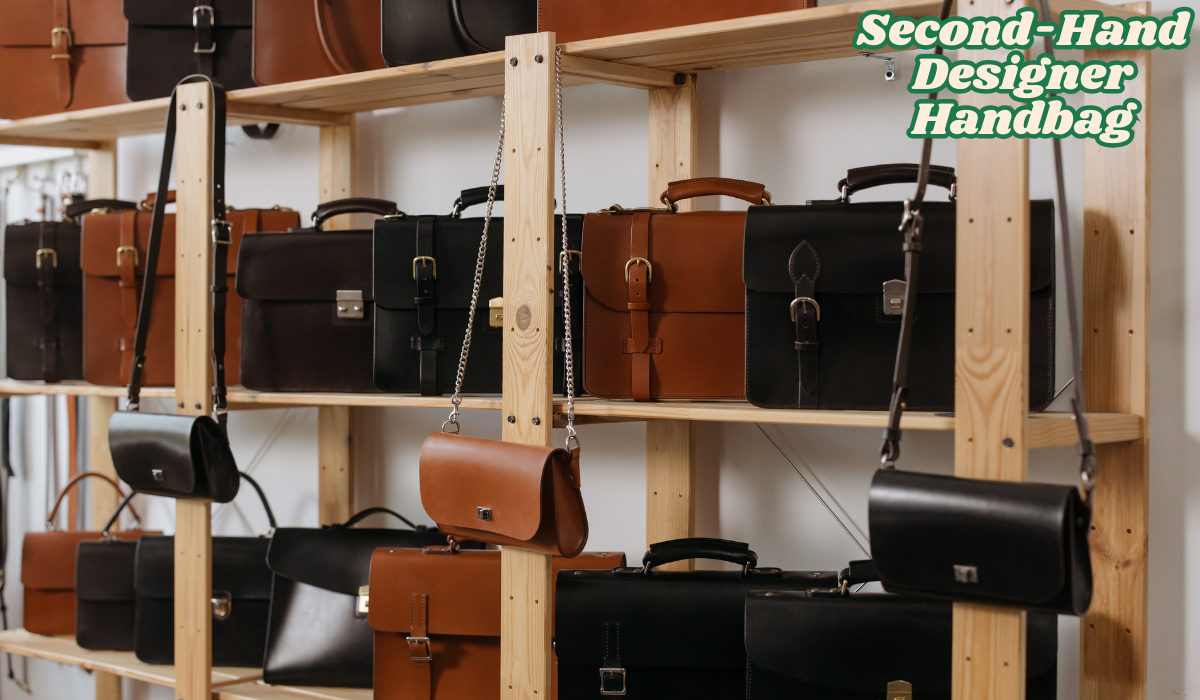Fashion
Everything You Need to Know About Buying a Second-Hand Designer Handbag

Purchasing a second-hand designer handbag is an excellent way to own luxury items at a more affordable price point. However, it’s essential to approach this process with caution to ensure authenticity, quality, and value. Here’s everything you need to know before purchasing a pre-owned luxury handbag.
1. Set a Budget
Before you begin your search, it’s crucial to decide how much you’re willing to spend. While second-hand designer handbags are more affordable than buying new ones, they still represent a significant investment. Factor in other potential costs such as maintenance, repairs, or authentication services if necessary. Setting a clear budget will help guide your search and prevent overspending.
2. Research the Brand and Model
Familiarizing yourself with the brand and specific handbag model you’re interested in is one of the most important steps. Every designer bag has its unique features, materials, and construction methods. Whether it’s a Louis Vuitton, Chanel, or Gucci bag, each brand has specific stitching patterns, hardware details, and serial numbers that are consistent across authentic items. Understanding these details can help you spot fakes and ensure you’re purchasing a genuine item.
3. Choose Reputable Sellers
When buying second-hand luxury items, it’s essential to purchase from reputable sources to guarantee authenticity and ensure the handbag is in good condition. Trusted resale platforms, consignment shops, and online marketplaces like The Luxury Closet, Vestiaire Collective, and Fashionphile are popular for pre-owned luxury goods. Many of these platforms provide detailed product descriptions and offer authentication services to ensure the bags are real.
4. Inspect the Bag’s Condition
One of the most significant factors to consider when purchasing a second-hand designer handbag is its condition. Carefully inspect the bag for signs of wear and tear, such as scuffs, discoloration, or scratches. Pay close attention to areas like the corners, handles, zippers, and hardware, as these are prone to damage. It’s also essential to ensure that the stitching is even and intact. If the bag has been repaired, ensure that the repairs are of high quality and are not visible or detracting from the overall appearance.
5. Verify Authenticity
Authenticating a designer handbag can be tricky. Every designer has its unique features, and counterfeiters can be skilled at replicating these features. Look for serial numbers, brand stamps, and date codes inside the bag. While counterfeit bags might look convincing, there are often small details that give them away, like incorrect stitching, uneven logos, or low-quality hardware. If you’re unsure about the bag’s authenticity, you can opt for professional authentication services, which are offered by many consignment stores or third-party specialists.
6. Understand Pricing
Before making a purchase, research the typical market price for the handbag you’re interested in. This will give you a sense of its value based on its age, rarity, and condition. Be cautious of deals that seem too good to be true, as they may indicate that the bag is either counterfeit, damaged, or overpriced. A genuine second-hand luxury handbag should be priced appropriately according to its condition and rarity. Also, keep in mind that bags in pristine condition or limited edition bags might still command a high price even on the second-hand market.
7. Consider the Bag’s History
Inquire about the handbag’s history, especially if it’s a rare or vintage item. Knowing about the bag’s previous ownership and any repairs or modifications it has undergone can help you assess its value and condition. Some luxury bags, especially vintage ones, can become more valuable if they have been well-maintained and have a documented history.
8. Check Return Policies
Before finalizing your purchase, make sure to review the seller’s return policy. A reputable seller should offer a reasonable return window, allowing you to return the bag if it doesn’t meet your expectations or if you discover undisclosed damage after purchase. It’s essential to understand the terms and conditions surrounding returns, as this will give you peace of mind in case the bag isn’t as described or doesn’t meet your expectations.
9. Factor in Maintenance Costs
Owning a luxury handbag may require occasional maintenance, such as cleaning, conditioning, or repairs. Depending on the bag’s material and age, you may need to invest in its upkeep to ensure it remains in excellent condition. Always factor in these additional costs when budgeting for your second-hand purchase, as maintaining the integrity and appearance of your handbag will keep it looking great for years.
10. Be Patient
Finding the perfect second-hand designer handbag may take time. Be patient and diligent in your search to ensure you get the best value for your money. If you don’t find exactly what you’re looking for immediately, keep checking various platforms, as new items become available all the time. Don’t rush into a purchase – it’s better to wait for the right handbag to come along than to settle for something less than perfect.
Conclusion
Buying a second-hand designer handbag can be a rewarding experience if done carefully. By setting a budget, researching the brand and model, choosing reputable sellers, inspecting the bag’s condition, and verifying its authenticity, you can confidently navigate the pre-owned luxury handbag market. With patience and knowledge, you’ll be able to find a timeless piece that adds value to your wardrobe while saving you money.
